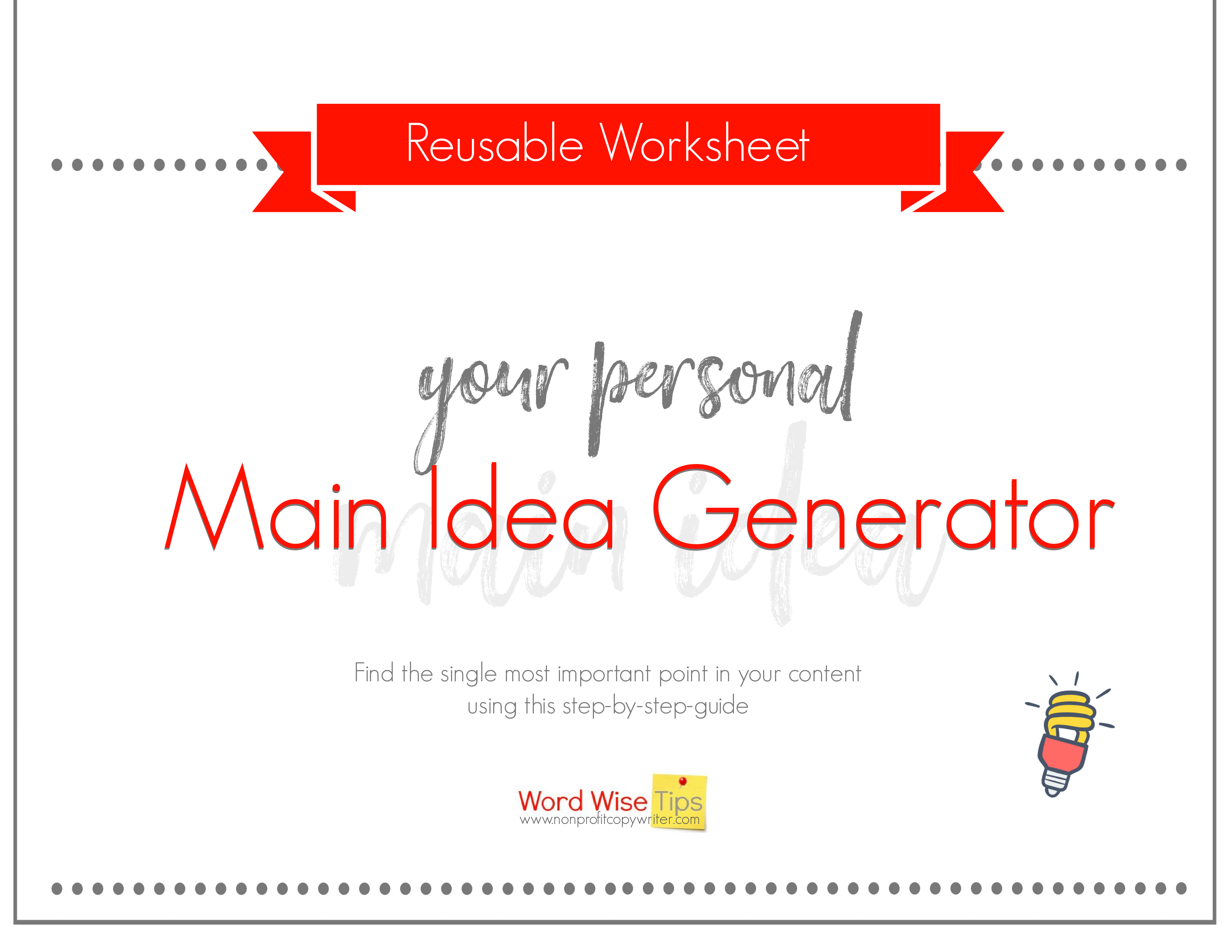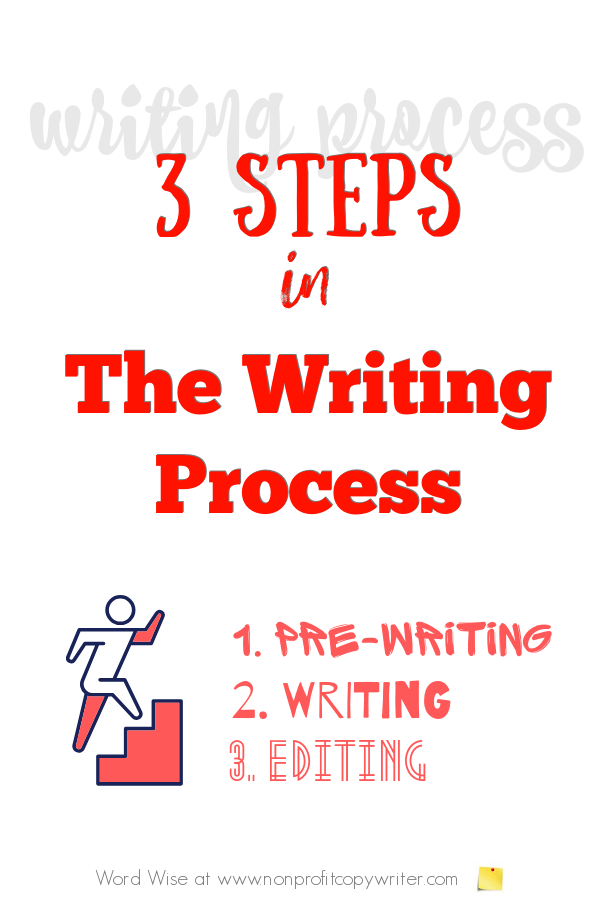Save Time: Get 5 Simple Writing Tips
you can put to use in 10 minutes
Planner or Pantser? Make the 3 Steps in the Writing Process Work for You
Award-winning writer Kathy Widenhouse has helped hundreds of nonprofits and writers produce successful content , with 750K+ views for her writing tutorials. She is the author of 9 books. See more of Kathy’s content here.
Updated 12.10.24
Writers agree: there are clear steps in the writing process. Whether you’re Spontaneous Susie or Planning-Obsessed Peter, you’ll succeed more as a writer and struggle less if you embrace the fact that quality content is produced in stages.
I’m not alone in this thinking. “In my experience, there are two types of authors: those that start with planning, and those that start with writing,” says writer and editor Josh Bernoff. “Call them planners and pantsers (seat-of-the-pants writers) if you want. Both ways work. But the people who start with writing suffer more.”
What does the writing process look like?
Josh surveyed his readers and found that more than half are pantsers — a full 55%. These Spontaneous Susies start writing by … well, writing. It’s one big fat activity. They mingle research, drafting, and rewriting tasks together into one not-so-happy pot.
That means pantsers battle panic when deadlines loom. Rabbit trails spin off their content’s main point. Disorderly logic leads to excessive rewrites.
Meanwhile, Planning-Obsessed Peters number just one in five writers, according to Josh’s survey. They plan their writing carefully and cling to steps in the writing process. To that point, planners suffer from their own problem — the tendency to focus on the stages of writing rather than the writing itself. The Peters among us produce less content because they’re bent on carrying out each of the stages of the writing process perfectly.
To add to the mess, both Spontaneous Susies and Planning-Obsessed Peters must listen to other writers preach the “ideal” process to follow. Experts tout 4 stages of the writing process … 7 steps necessary to produce content … or 10 phases you MUST complete for a writing project to be successful. Identifying the definitive writing process? It’s confusing and discouraging.
Don’t get me wrong. Writing isn’t a simple sit-down-and-churn-it-out affair. I’m all about planning well. But I’m also all about making writing simple.
Divide the process of writing into 3 buckets
That’s why I drill down the writing process to just three steps — three kinds of tasks. Or “Three Buckets,” as best-selling author Jeff Goins explains.
Embracing just 3 steps in the writing process places me squarely in the unconventional camp. On one hand, writing in 3 steps endears me to pantsers, who can pour their spontaneity into one of three buckets and still avoid writing chaos. And the planners? Admit it. You love simplicity, too. Three steps satisfies your compulsive need to organize.
But note that simplicity doesn’t mean simple. I use these steps as a framework so I can write more quality content and write it faster. You can too, no matter where you fall on the writing spectrum. Check out these three “big picture” stages of the writing process and look at what each step means for both planners and pantsers.
The 3 steps in the writing process
Step 1: Prewriting
Prewriting is the work you put in before you start creating a piece of content. Maybe you don’t count these tasks as actual “writing.” Don’t fool yourself. Prewriting takes time and creative juices. It boils down to this:
Brainstorming
Whether it’s mind-mapping or freewriting or brainstorming, you need to start writing by accumulating ideas. Along the way, don’t censure yourself. Write down every idea that comes to mind, no matter how inconsequential or silly or odd it may seem. And don’t edit yourself. Don’t worry about grammar, spelling, or even clarity. You will rewrite and edit later. The first goal in the writing process is to accumulate ideas and get them down on paper.
Researching
While you’re gathering, do some detective work at the same time. Study your ideas. Which ones capture your interest? Choose a topic and then set about becoming its amateur expert. Who are the authorities on this subject? How many angles can you find? What’s a slant you can take for a specific readership? Gather more information than you need and save it. Whatever you don’t use for your current project will be useful for another one.
Processing ideas
All that brainstorming and research leads to a jumble of creative output. To process all those luscious ideas, choose one topic. Then make three lists: audience, problem, and solution. Study those lists and ask yourself, “What is the Single Most Important Thing (SMIT) I need to tell my reader in this piece?”
And you thought you were wasting time by daydreaming (a.k.a. brainstorming), surfing the internet (a.k.a. researching), and absorbing (a.k.a. processing ideas). Nope. You were prewriting. Just make sure you take notes along the way and save them with tags in your files.
- What Spontaneous Susie pantsers enjoy about the pre-writing step: freedom! During the pre-writing phase, you can relish in multiple ideas flowing in all different directions.
- What Planning-Obsessed Peters enjoy about the pre-writing step: prewriting gives you the chance to weed through a pile of mumbo jumbo and make order out of chaos.

Step 2: Writing
It’s this step that many people think of as writing. And it is. But if you’ve spent time in prewriting, then putting together your first draft isn’t nearly as intimidating as it could be otherwise.
Outlining
Take your ideas, source material, and notes and organize them into some semblance of order. For many, that means you put them into an outline — one that’s appropriate for a particular project. A chapter of a book, for example.
Drafting
With an outline in hand, develop it — one section at a time. When you draft, write freely. Focus on getting your thoughts on paper without worrying too much about grammar or style. You’ll revise it later. Your goal is to create a rough version of your content.
- What Spontaneous Susie pantsers enjoy about the drafting step: it’s “real” writing!
- What Planning-Obsessed Peters enjoy about the drafting step: outlines create order. Planners find satisfaction in working the system to produce a tangible outcome.
Step 3: Editing
Editing means carving up and rewriting what you’ve already created so that it’s in a presentable form. This step isn’t as overwhelming as it sounds. It involves two separate tasks, known as the Twin Pillars of Editing — revising and copyediting.
Revising
Address how you present your subject matter. Is your content interesting, original, and written in an engaging way so that readers get something out of it? Are you communicating ideas clearly, with continuity and sound reasoning? Maybe you need to move Idea A or Paragraph 5 to another spot. What about your documentation — have you fact-checked, quoted accurately, and cited your sources?
Copyediting
Now that your content is in logical order, proofread the mechanics of your piece. Your goal is to make your writing correct, easy to read, and clean. Check for grammar mistakes, spelling errors, typos, missing words, repetition, awkward sentences, passive voice, subject-verb agreement, misplaced modifiers, homonyms, verb tenses, and split infinitives — all the no-nos your language arts teacher railed against.
- What Spontaneous Susie pantsers enjoy about the editing step: it’s another opportunity to change, add, and expand on what they’ve already written.
- What Planning-Possessed Peters like about the editing step: it’s all about clean-up! Planners like neatness and order. Editing allows planners to focus and tidy their writing to share with the world.
Both pantsers and planners can write better content — faster
By my calculations, there are a total of 7 sub-steps in my 3 larger steps in the writing process. But three steps are much less overwhelming than seven. My point? Good writing needn’t be complicated.
If you’re a Susie and you start using the three steps, your writing will have more clarity. If you’re a Peter and you start using the three steps, you’ll find more freedom from rigidity.
Place your writing tasks in just one of the three writing buckets. Then work on one bucket at a time. Do that and you’ll produce better content — and more of it — whether you’re a Susie or a Peter. And you’ll struggle less along the way, too.
More about the writing process
My Sanity-Saving Research Tip for Writers ...
7 Brainstorming Techniques for Writers ...
Pre-Writing: 4 Easy Tips to Make Your Writing Go Faster ...
The Writing Process: The Key to Writing Faster and Better ...
Secret of Success: Know How to Set and Achieve a Writing Goal ...
More about the writing process on our Pinterest board ...
Return from Make the 3 Steps in the Writing Process Work for You
to Nonprofit Copywriter home
As an Amazon Associate I earn from qualifying purchases.
Share This Page

Named to 2022 Writer's Digest list
BEST GENRE/NICHE WRITING WEBSITE


Stop Wasting Time!

Grab your exclusive FREE guide, "5 Simple Writing Tips You Can Put to Use in 10 Minutes or Less"











